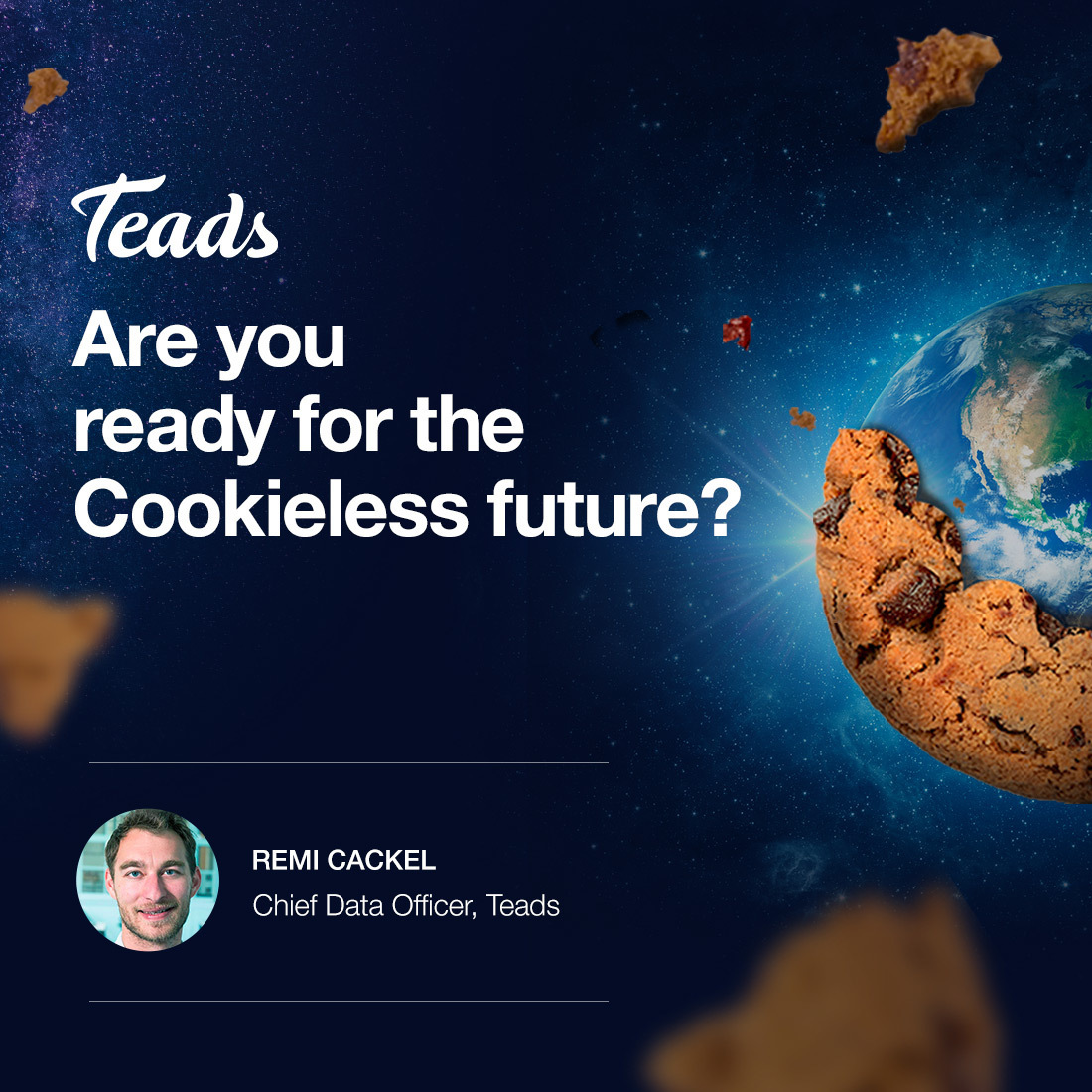Cookies in digital marketing have played a huge role. while digital consumption has accelerated throughout the past 12 months, the rules of advertising online are changing. As tech firms and regulators herald the end of the cookie in 2021, here are initial steps for marketers to take, to ensure their advertising is still reaping the measurable benefits of digital marketing, but with cookies no longer at their disposal. By Remi Cackel, Chief Data Officer, Teads.

1 – Be prepared to face the challenge of no cookies in digital Marketing
Because there is no doubt this is a challenge. Digital marketing has used cookies as a base for years now, so continuing to be effective requires change. A change in approach, a change in teams and partners and scope. But with the right preparation, success will come. Make sure your parameters are clearly defined; how are you defining your market? Where do you view your brands sitting within those markets and how will you measure success going forward? Be sure that you’re analyzing and reviewing your current audience targeting needs, splitting it by top categories, such as demographics, interest, intent, etc.
2 – Reshape your first-party data strategy
Whether in terms of data collection or utilization, most of clients’ first-party data is largely cookie-dependent and will shrink. Despite this expected volume reduction it, paradoxically, becomes even more strategic to focus your time in using it, but in a different way. There are two key points to consider:
Use your data beyond standard targeting.
You have to think beyond the utilisation of your data for direct messaging/lookalike modelling. Review in priority how your data can be used in two key uses-cases:
(i) To support cookieless planning and decision-making
The data you have about your consumers should become the cornerstone of your cookieless transformation.
For example using it to analyse which contexts over-index for your most valuable customers. Knowing the type of content your clients are reading in each market, and for each brand, will help you define your initial contextual targeting strategy.
(ii) To support measurement needs
Measuring performance and effectiveness does not need to be done across 100% of the campaign delivery, only on a statistically representative percentage.
Ensure you are using your 1st-party data to power media effectiveness measurement as much as possible (e.g: capturing online/offline signals of visits from your properties).

Introduce sustainable identity resolution and privacy compliance
Review all your data collection and utilization channels to assess how you can map your users against login/persistent identifiers to future-proof its utilization.
When publishers introduce a significant volume of unique IDs on the open-web, you want to already be in the position of being ready to use it.
It’s also crucial to make sure you’re allowing proper data privacy management for users (user consent, right to access/delete, etc). This should be addressed not just from a regulatory perspective, but also to make sure you are engaging your consumers in the right way.
3 – Future proof your audience targeting capabilities
We need to be realistic about what will replace the cookie. Despite many claims from across adland, there will be no one-size-fits-all solution. Different approaches will need to be properly understood, tested and combined in order to maintain the same levels of ad effectiveness.
Be sure to keep track of, and test, the most up-to-date industry initiatives. The most current ones are outlined here:
- Privacy Sandbox: Get ready for the first tests which will probably happen during H1 2021, find out more here
- Real-time profiling: Using insights and relevant (cookieless) signals as a proxy of an audience (e.g: context, device models, etc.)
- Publishers’ first-party data: Make a list of publishers who have relevant/suitable data for your main/core audiences. This approach has as many opportunities as it has limitations, be sure to be aware of both before fully committing to this path.
- Unique ID: Understand that it’s mostly about using a login and that you should not spend time in A/B testing different solutions. Publishers are progressively integrating more login solutions. Make sure to monitor the scale and begin testing as soon as it becomes actionable (in the mid to long-term)
4 – Discover the power of content
Contextual targeting is not a plan-B, it provides an equally viable media strategy that we’ve been proving with multiple brands across all markets around the world. The challenge with contextual targeting at scale is that harnessing its power isn’t understood by many. So what are the steps to take to ensure you can make the most of it? The same as all good campaigns, it needs to start with a good media plan to ensure proper actionability.
Use your first-party data, new tools, and insights to learn which contextual signals can be used, when, and how?
Next steps are using contextual information for creative personalization: How can your creatives be personalized according to the content of the page to truly amplify your message? Measure the outcomes and compare them to audience targeting, you will be pleasantly surprised with the results.
The additional layer is to A/B test different contextual targeting solutions from the marketplace. See which works best for your brands and campaigns, at the right moment.
During 2021, be ready to go even one step beyond by exploring new contextual signals at scale: Weather, time of the day, device models,…etc. are all key cookieless dimensions, allowing greater personalisation and media effectiveness.
5 – Don’t get lost on the way
As you engage in your transformation away from cookies, you will face multiple challenges. We’ve outlined some of them above, but no doubt more will appear as we move through 2021. But with the right approach, you will be in the best possible position to continue:
- Adopt the right mindset: There’s no need to panic, but advertising without the use of cookies has to be seriously considered and understood across the whole of your digital marketing organization.
- Focus your efforts: Clearly define your timelines and project scope: What will be tested, how and when? Don’t blindly test all the ad-tech proprietary solutions, focus your efforts for best results.
- Communicate, participate to relevant working groups and share your results: Showcase best-in-class work to the whole industry and learn other brands’ experiences and points of view. This is a challenge we all need to meet together, but cross-industry collaboration is the best way to deliver business results whilst, critically, regaining consumer trust.
Article written by Remi Cackel, Chief Data Officer, Teads







